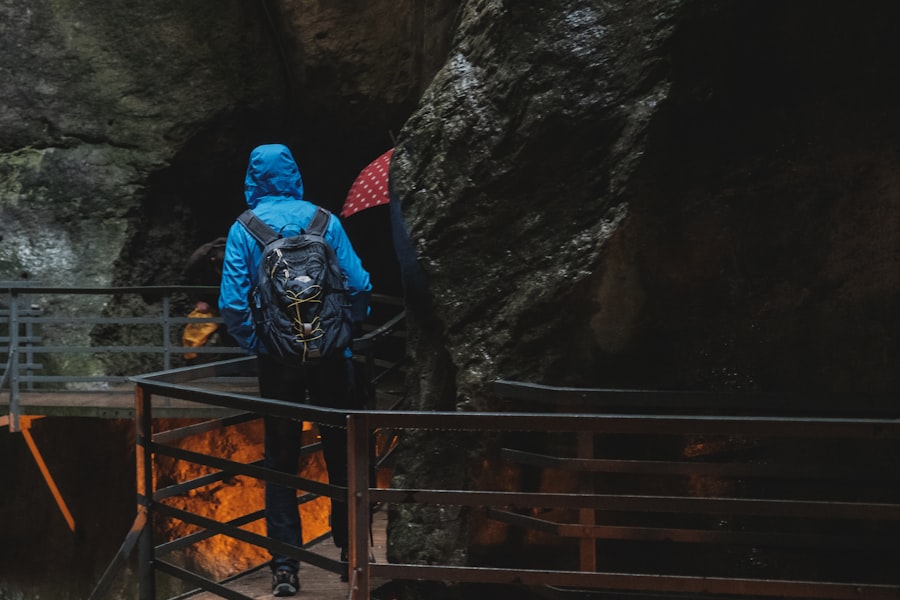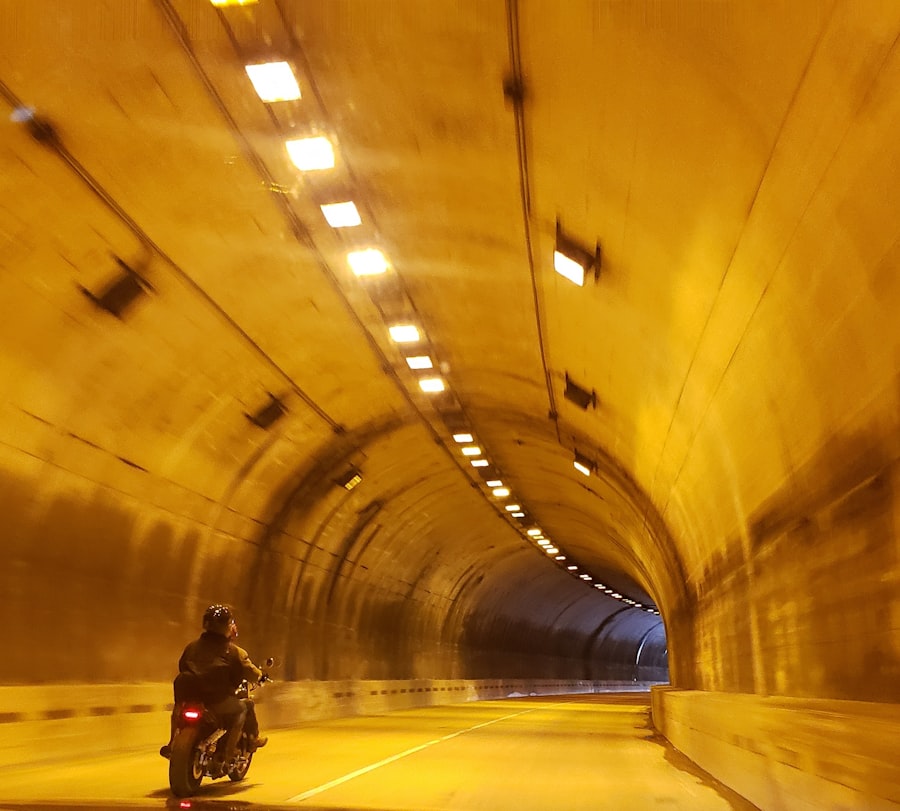The Drake Passage, a body of water that separates South America from Antarctica, is renowned for its tumultuous seas and unpredictable weather. Stretching approximately 600 miles, this passage is often considered one of the most challenging maritime routes in the world. It serves as a critical link between the Atlantic and Pacific Oceans, making it a vital area for marine navigation.
The passage is named after Sir Francis Drake, the English explorer who was the first to navigate these waters in the late 16th century. Its significance extends beyond mere geography; it is a region steeped in history and adventure. The waters of the Drake Passage are notorious for their rough conditions, characterized by strong currents and high waves.
This unpredictability is primarily due to the confluence of various oceanic currents, including the Antarctic Circumpolar Current, which flows unimpeded around the continent of Antarctica. As a result, travelers often experience a rollercoaster of emotions as they navigate through these waters. The passage is not only a test of physical endurance but also a rite of passage for many adventurers seeking to explore the pristine landscapes of Antarctica.
Key Takeaways
- The Drake Passage is a treacherous body of water between South America and Antarctica known for its unpredictable weather and rough seas.
- Proper preparation for the journey includes packing appropriate clothing, seasickness medication, and being mentally prepared for the challenging conditions.
- Choosing the right expedition involves considering factors such as the size and stability of the ship, the expertise of the crew, and the itinerary and activities offered.
- Safety measures and protocols are crucial for navigating the Drake Passage, including regular safety drills, experienced staff, and emergency response plans.
- Wildlife spotting opportunities in the Drake Passage are abundant, with the chance to see penguins, whales, and various seabirds in their natural habitat.
Preparing for the Journey
Preparation for a journey through the Drake Passage requires careful planning and consideration. Travelers must equip themselves with appropriate gear to withstand the harsh conditions that can arise during the crossing. Layering clothing is essential, as temperatures can fluctuate dramatically.
Waterproof outer layers, thermal undergarments, and sturdy footwear are crucial components of any adventurer’s packing list. Additionally, personal items such as seasickness medication should not be overlooked, as the unpredictable nature of the waters can lead to discomfort for even the most seasoned travelers. Beyond physical preparation, mental readiness plays a significant role in ensuring a successful journey.
Understanding the challenges that lie ahead can help travelers cultivate a sense of resilience and adaptability. Engaging with fellow adventurers and sharing experiences can foster camaraderie and provide emotional support during the crossing. By embracing the unknown and preparing for both the highs and lows of the journey, travelers can enhance their overall experience in this remarkable region.
Choosing the Right Expedition

Selecting the right expedition to traverse the Drake Passage is a pivotal decision that can greatly influence one’s experience. Various tour operators offer different itineraries, vessel types, and levels of comfort, catering to a wide range of preferences and budgets. Some expeditions focus on luxury and comfort, featuring spacious cabins and gourmet dining options, while others prioritize adventure and exploration, offering more rugged accommodations and immersive experiences.
Travelers should consider their personal interests when choosing an expedition. For those passionate about wildlife, selecting a tour that emphasizes wildlife spotting opportunities may be ideal. Alternatively, individuals seeking a more educational experience might prefer an expedition that includes lectures from experts in marine biology or glaciology.
By aligning personal interests with the right expedition, travelers can ensure that their journey through the Drake Passage is not only enjoyable but also enriching.
Safety Measures and Protocols
| Category | Metrics |
|---|---|
| Personal Protective Equipment (PPE) | Number of PPE items distributed |
| Sanitization | Frequency of sanitization of common areas |
| Social Distancing | Percentage of compliance with social distancing guidelines |
| Training | Number of employees trained on safety protocols |
| Incident Reporting | Number of safety incidents reported |
Safety is paramount when navigating the unpredictable waters of the Drake Passage.
Before embarking on their journey, travelers typically receive comprehensive safety briefings that cover emergency procedures, equipment usage, and guidelines for behavior on board.
These briefings are designed to instill confidence in passengers while ensuring they are well-informed about potential risks. In addition to safety briefings, modern vessels are equipped with advanced technology to enhance safety during crossings. GPS navigation systems, radar equipment, and communication devices play crucial roles in monitoring weather conditions and ensuring safe passage through turbulent waters.
Crew members are trained to respond swiftly to emergencies, further bolstering safety measures on board. By prioritizing safety protocols, expedition operators create an environment where travelers can focus on enjoying their adventure without undue concern.
Wildlife Spotting Opportunities
One of the most captivating aspects of traversing the Drake Passage is the opportunity to witness an array of wildlife in their natural habitats. The waters surrounding this region are teeming with life, including various species of whales, seals, and seabirds. Travelers may have the chance to spot majestic humpback whales breaching the surface or playful orcas gliding through the waves.
The sight of these magnificent creatures in their natural environment can leave an indelible mark on any adventurer’s memory. Birdwatching enthusiasts will also find plenty to marvel at during their journey. The Drake Passage is home to numerous seabird species, including albatrosses and petrels, which can often be seen soaring gracefully above the waves.
Many expeditions offer guided birdwatching sessions led by knowledgeable naturalists who provide insights into the behaviors and characteristics of these fascinating birds. The thrill of spotting wildlife adds an exhilarating dimension to the journey, making it an unforgettable experience for all who embark on this adventure.
The Impact of Weather and Sea Conditions

Weather conditions play a significant role in shaping the experience of crossing the Drake Passage. The region is known for its rapidly changing weather patterns, which can shift from calm to stormy within a matter of hours. Travelers must remain adaptable and prepared for various scenarios, as conditions can impact not only comfort but also safety during the crossing.
Understanding how weather influences sea conditions is essential for anyone embarking on this journey. The impact of weather extends beyond mere discomfort; it can also affect wildlife sightings and overall expedition itineraries. For instance, rough seas may limit opportunities for landings on remote islands or hinder wildlife spotting efforts.
Conversely, calm weather can create ideal conditions for exploration and observation. Expedition leaders closely monitor weather forecasts to make informed decisions about routes and activities, ensuring that travelers have the best possible experience despite nature’s unpredictability.
Navigational Challenges and Strategies
Navigating through the Drake Passage presents unique challenges that require skillful strategies from experienced crew members. The combination of strong currents, shifting winds, and unpredictable weather patterns creates a complex maritime environment that demands constant vigilance. Captains must possess a deep understanding of oceanography and navigation techniques to safely guide their vessels through these treacherous waters.
To mitigate navigational challenges, modern vessels are equipped with advanced technology that aids in route planning and real-time monitoring of conditions. Crew members utilize radar systems and GPS navigation tools to track their position and adjust their course as needed. Additionally, experienced navigators rely on traditional methods such as celestial navigation when necessary.
By combining modern technology with time-honored techniques, crews can effectively navigate the complexities of the Drake Passage while ensuring passenger safety.
Historical Significance of the Passage
The historical significance of the Drake Passage cannot be overstated. This body of water has been a crucial route for explorers, scientists, and adventurers for centuries. Sir Francis Drake’s pioneering voyage in 1578 marked one of the first recorded crossings of these waters, paving the way for future exploration of Antarctica and beyond.
The passage has since become synonymous with adventure and discovery, attracting countless individuals eager to follow in Drake’s footsteps.
Its unique ecosystem provides valuable insights into climate change and marine biology.
Researchers have conducted numerous studies in this region to better understand ocean currents, wildlife behavior, and ecological interactions. As such, traversing the Drake Passage offers not only an adventure but also an opportunity to engage with its rich historical narrative.
Cultural and Scientific Activities on Board
Expeditions through the Drake Passage often include a variety of cultural and scientific activities designed to enrich travelers’ experiences. Onboard lectures led by experts in various fields provide valuable insights into topics such as marine biology, glaciology, and Antarctic history. These educational sessions foster a deeper appreciation for the unique environment travelers are exploring while encouraging meaningful discussions among participants.
In addition to lectures, many expeditions offer hands-on activities that allow travelers to engage with their surroundings actively. Guided photography workshops may be available for those looking to capture stunning images of wildlife or landscapes. Additionally, citizen science projects may invite passengers to contribute to ongoing research efforts by collecting data or observing wildlife behaviors during their journey.
These activities not only enhance travelers’ understanding but also create lasting memories that extend beyond mere sightseeing.
Tips for a Memorable Experience
To ensure a memorable experience while crossing the Drake Passage, travelers should consider several practical tips before embarking on their journey. First and foremost, maintaining an open mind is essential; embracing spontaneity can lead to unexpected adventures and delightful surprises along the way. Engaging with fellow travelers fosters camaraderie and enriches shared experiences, creating lasting friendships that extend beyond the voyage.
Additionally, staying informed about daily activities and itineraries enhances one’s overall experience aboard an expedition vessel. Participating in group excursions or guided tours allows travelers to immerse themselves fully in their surroundings while benefiting from expert knowledge provided by naturalists or historians on board. Finally, taking time to reflect on personal experiences—whether through journaling or photography—can help solidify memories made during this extraordinary journey through one of nature’s most awe-inspiring passages.
Reflecting on the Adventure
As travelers complete their journey through the Drake Passage, they often find themselves reflecting on their experiences with a sense of awe and gratitude. The challenges faced during the crossing serve as reminders of nature’s power while highlighting human resilience in overcoming obstacles. Many adventurers leave with newfound perspectives on life and a deeper appreciation for our planet’s diverse ecosystems.
The memories forged during this expedition extend far beyond mere photographs; they become part of each traveler’s personal narrative—a testament to their courage in exploring uncharted territories. Whether it was witnessing breathtaking wildlife encounters or engaging in enlightening discussions with fellow passengers, each moment contributes to an unforgettable tapestry woven from shared experiences in one of Earth’s most remarkable regions. Ultimately, crossing the Drake Passage becomes not just an adventure but a transformative journey that resonates long after returning home.
For those intrigued by the thrilling adventure of navigating the Drake Passage, an article on MyGeoQuest offers an insightful exploration of this legendary maritime journey. The Drake Passage, known for its turbulent waters and breathtaking scenery, is a rite of passage for many seafarers and adventurers. To delve deeper into what makes this experience so unique, you can read more about it in the related article on MyGeoQuest. Discover the challenges and the awe-inspiring beauty that await those who dare to cross this iconic stretch of ocean by visiting MyGeoQuest.
WATCH NOW! Drake Passage: Earth’s Deadliest Waters Revealed
FAQs
What is the Drake Passage?
The Drake Passage is the body of water between the southern tip of South America and the northern tip of the Antarctic Peninsula. It is known for its rough seas and challenging sailing conditions.
What is the experience like in the Drake Passage?
The Drake Passage experience can be characterized by rough seas, strong winds, and potentially stormy weather. It is often referred to as one of the roughest stretches of water in the world.
What activities can be done in the Drake Passage?
While crossing the Drake Passage, travelers can engage in bird watching, whale spotting, and educational lectures provided by onboard naturalists and experts. Some cruises also offer photography workshops and other educational activities.
What wildlife can be seen in the Drake Passage?
The Drake Passage is home to a variety of wildlife, including seabirds such as albatrosses and petrels, as well as marine mammals like whales and dolphins. Penguins can also be spotted on nearby islands.
How long does it take to cross the Drake Passage?
The crossing of the Drake Passage typically takes around 2-3 days, depending on weather conditions and the specific route taken by the vessel.
What should I pack for a trip through the Drake Passage?
Travelers should pack warm, waterproof clothing, including a good quality waterproof jacket and pants, as well as sturdy, waterproof footwear. It is also recommended to bring motion sickness medication, as the rough seas can cause discomfort for some passengers.
